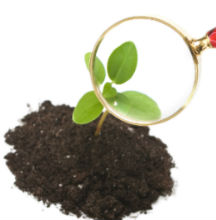Now is the time to build your vegetable garden!
Making a bed either a permanent in-ground bed, raised bed without permanent sides or raised bed with permanent sides will require materials and some hard work but remember this is an upfront commitment which will pay off dividends down the road. The hardest work and time commitment resulting in the biggest rewards in production are double-digging beds. While double-digging is not necessary to make simple raised beds it is an essential part of biointensive gardening which is a popular way of gardening today. For more information on double-digging or biointensive (There are also many YouTube videos detailing this process): http://www.growbiointensive.org/Self_Teaching_2.html
Most gardeners will choose to make a raised bed with solid sides without double-digging as it is a simple process as well as inexpensive. You will also be able to determine the length and width of the bed to the size of space which is available to you. For ease of access width should not exceed 4 feet across and multiple beds should have a 3 foot pathway between beds to allow garden tools as well as allow access to the garden site without walking on planting soil. Exact specifications for simple raised beds are included on additional pages after this article. When designing your raised bed remember smaller is always better for inexperienced gardeners but think outside the “box” to design your raised bed. Online images can help you design something to fit your needs although the construction may be a bit more complicated than instructions given here.
Once beds are built, the kind of soil to put in them is a major decision since soil not designed for vegetables may hinder efforts to properly grow them. Soil bought in from other sources may take a couple of years to tweak to gain maximum benefit. The easiest way to fill small raised beds is by purchasing bags of bagged compost, top soil and garden soil (1/3 rd of each) from home improvement stores. Bigger beds may require a visit to a local nursery to arrange truck delivery in cubic yards of enough top soil and compost to fill beds.
There are also many “recipes” of the soil mixtures available online. Beware that soil should not come from sites where heavy metal contamination or other types of industrial contamination are prevalent. While animal manures can be part of the mixture they should be composted or at least 6 months old. Do take advantage of local sources of free materials but remember to mix different materials for proper growing conditions. Make sure soil is mixed well, watered down completely and then allowed to rest for the winter. One final task once the garden bed is complete is to put a covering over the soil to prohibit it from blowing away during the winter. Old straw mixed with shredded leaves is an ideal covering.



